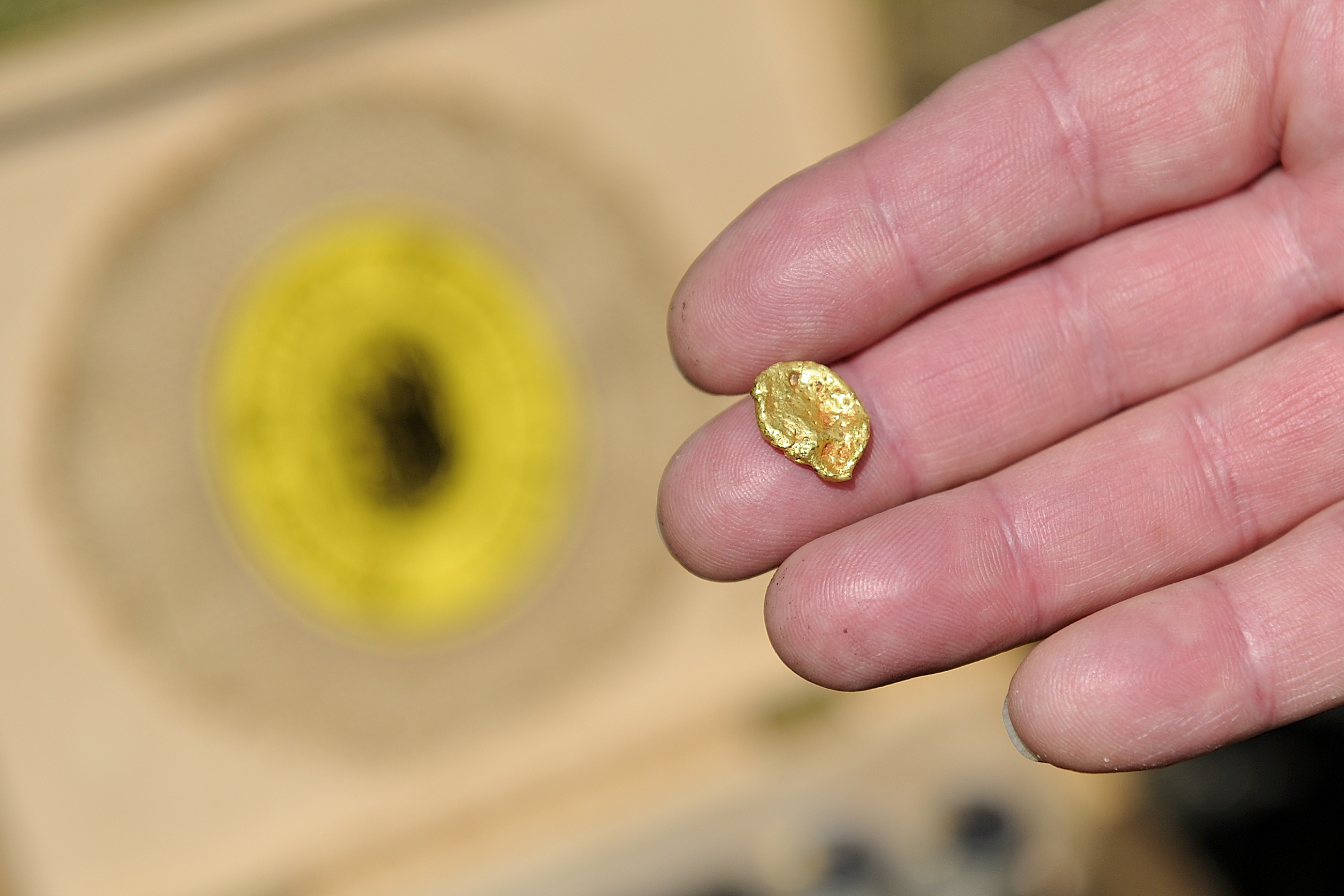
Every year, with the arrival of warm weather, gold diggers from around the globe converge on the Kaczawa river in Poland’s gold rush capital Zlotoryja to try their luck at panning. / AFP PHOTO /
by Damien Simonart
ZLOTORYJA, Poland (AFP) — Each spring they come from around the globe to the Kaczawa river in southwest Poland’s gold rush capital, vying for the biggest flash in the pan.
Knee deep in water, excited enthusiasts, young and old alike, survey the riverbed in Zlotoryja in search of tiny gleaming flakes, hoping their perseverance will pay off.
“Whenever I’m in the river, I find at least a dozen tiny pieces of gold and dozens of flakes,” said Jaroslaw Dudkiewicz, a member of the Polish gold miners’ association.
“The most ambitious prospectors manage to gather three to four grammes per day,” he told AFP.
Zlotoryja’s gold rush dates back to the 12th century when legend has it, prospectors managed to collect more than 50 kilogrammes (110 pounds) a year.
The town even chose to enshrine the activity in its name: first Aurum, or “gold” in Latin, then Goldberg, or “mountain of gold” in German, and finally Zlotoryja, or “gold-digging” in Polish.
Tadeusz Osilewicz first came down with gold fever almost 25 years ago and has since spent thousands of hours panning — all for what amounts to just one ounce (30 grammes) of gold.
Worth about $1,300 (1,150 euros) at current prices, the fruit of his labour fits into a little box, but no matter.
“I’m not rich, but I’m happy to own gold that I’ve found myself,” he said.
“I wanted to give the gold to my daughter so she could use it to make wedding rings for her marriage, but she didn’t want it so I’m just collecting it.”
Gold-panning championships
Zlotoryja’s reputation as the city of gold put it on the map from the Middle Ages.
“A 13th century papal map of Europe showed only two Polish cities: Wroclaw and Zlotoryja,” said Zbigniew Gruszczynski, director of the local museum of gold.
“Obviously, it didn’t show all the cities here — just the ones that were worth mentioning,” he told AFP.
Prospectors poured in from around Poland and Germany and some even dug tunnels in the area’s mountains. One of the resulting mines, Aurelia, is now open to tourists.
But all the gold-digging soon took its toll and by the mid-14th century deposits had all but dried up, leading Zlotoryja’s inhabitants to branch out into beer and textiles.
Mining is no longer viable but the old shafts continue to draw tourists and some say there is still a lot of the precious metal under foot.
“We calculated the amount of gold that could have been dumped here in slag heaps during the Middle Ages,” said archeologist Witold Laszewski.
“According to our estimates, there are around five kilos of gold beneath the streets of Zlotoryja.”
In a sign that gold fever is still infectious, the town hosts the World Gold-Panning Championships every year on the last weekend of May.
Open to all, including children, the competition has each participant sift through a bucket of sand and water to locate the hidden pieces of gold as quickly as possible.
The current record? Fifty-two seconds.
dsi/via/amj/mas/boc
© 1994-2016 Agence France-Presse







